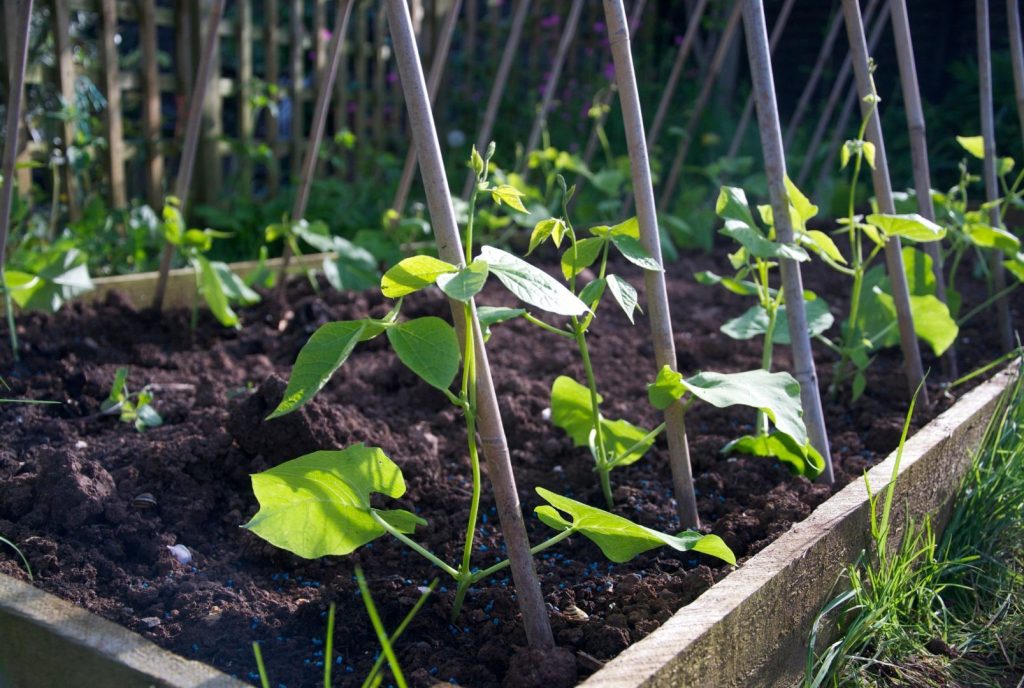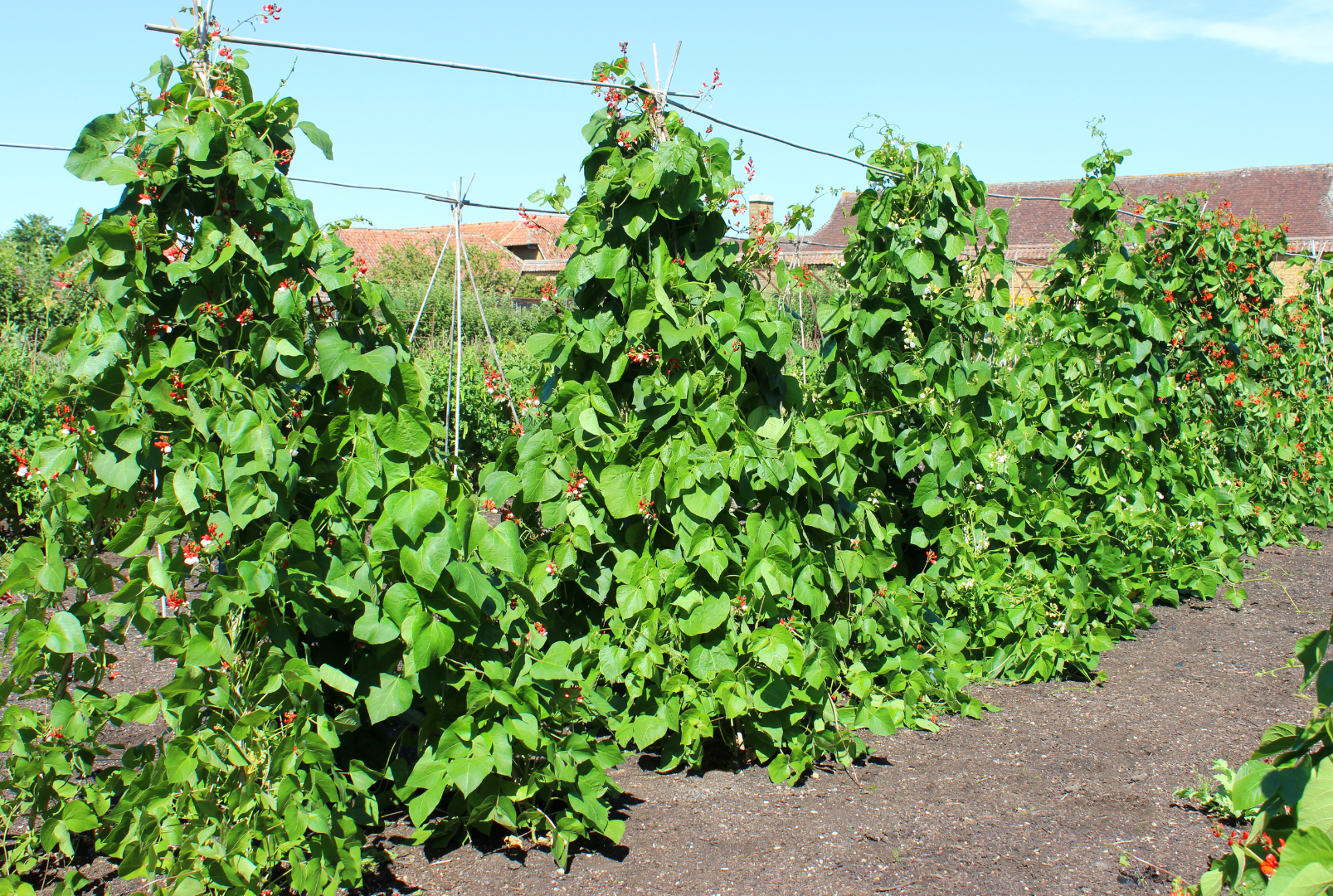Runner Beans Information and Production Steps
Cultivation guide of runner beans
The Runner Beans Plant
Runner beans, scientifically known as Phaseolus coccineus L, are crops in the legume family – Fabaceae. They are fast-growing vine climbers that can grow up to 3 meters tall. They have red, white, or bi-colored flowers that, when fertilized, produce clusters of long green pods with an average length of 25cm. The seeds are large, about 2.5 cm, and have different colors like purple, white, or multi-colored.
Originating from Central America, where they were first cultivated in the highlands of Mexico and Guatemala, Runner beans are one of the most popular summer vegetables. They are among the easiest legumes to grow and can be grown on extensive ground cover, in big containers, or on the edges of the farm. Unlike the common beans, the runner beans have hypogeal germination, where cotyledon remains underground during germination, and they are perennial vines. However, they are treated as annuals because they are killed by frost in the winter. They also produce throughout the season, unlike the bush beans that are produced for a short window.

Runner Beans Commercial Varieties and Uses
Runner beans come in different varieties, and you have a range to choose from according to your needs. The most common runner bean varieties are:
- ‘Redrum’- These are self-pollinated varieties, and you can enjoy harvest even if you only have one crop
- ‘White lady’- Tolerant to dry conditions in comparison to other varieties
- ‘Polestar’- This variety flowers early and can crop over a long season
- ‘Painted Lady’- This is a well-flavored variety
- ‘Scarlet Emperor’- These have heavy production

Scarlet variety
The Runner beans are grown for different uses around the world:
For Human consumption: They are an important source of protein worldwide; they are mainly consumed as fresh pods. They can start being eaten when they are still young and around 10 cm (4 inches) long. They are easy to cook and can be easily combined with many different ingredients and lots of flavors.
NOTE: Like most legumes, runner beans should be well cooked to eliminate the toxic protein (antinutrient factor) Phytohaemagglutinin, which is toxic if consumed in high quantities.
They can also be used as ornamental plants because of their striking, beautiful flowers and the characteristics of their seeds, leaves, and fruits, like their shape and size.
They are used temporarily for screening of the home or garden because of their height and dense growth.
They are important for attracting insect pollinators and birds to the garden because of their vibrant blooms. And especially in mixed cropping because they are late bloomers and still have flowers when other crops are done flowering.

The plant remains are used as animal feeds or returned to the soil as compost.
Finally, Runner beans are a role player in agriculture because of their ability to fix nitrogen and enrich the soils with this essential element for plant growth. Finally, plants are important to the scientific community for trials/experiments.
Land preparation
Prepare your land adequately before the planting season for the ground to settle. Dig out all weeds or unwanted foreign materials (trash). Till you soil to a depth of between 20-25 cm (8- 10 inches) and rake it to break the add pans, add compost or manure to the soil for the nutrients. The soil p.H should be 6.5; if it is acidic, add lime to correct it. Make furrows on your land for sowing with a spacing of 100 by 20 cm (39 by 8 inches).

Planting runner beans
Runner beans can be sowed directly to the ground or planted on pots and transplanted later. This is dependent on the heat conditions because they are not hardy crops and can not tolerate temperatures below 5 °C (41 °F); thus, in harsh conditions, planting them in a room hardens them and prepares them for the field conditions; it also promotes better germination and will protect your seedlings from pests in the field like the snails and slugs. For direct sowing, place your seeds at a depth of 5 cm (e inches) and with a 10 cm spacing between plants. Use a well-draining growth medium enriched with organic matter or compost for potting. Plant your seeds in the pots and transplant them to the open field or garden when they develop their first true leaves.
Runner beans require strong support, and various forms of bamboo, canes, plastic mesh, and strings are used to create the trellis. You need to set up your trellis about 3 m tall before planting; although they grow this tall, they only need a little ground space. Train your runner beans, and when they reach the top of the trellis, pinch them to encourage horizontal and bushier growth for more production.
Water requirements
Runner beans are thirsty legumes; water them regularly, especially during the flowering stages. Mulching helps with water holding around the roots. Watering in the evenings is ideal to reduce water loss. Well-drained soils are important for runner beans.
Fertilizer requirements
Fertilize your runner beans every 3 weeks with a balanced water-soluble fertilizer.
Light requirements
Runner beans require full sun and about 10 hours of light exposure daily.
Pest and disease management
Runner beans are susceptible to attack by pests like snails, slugs, and aphids. You need to check for the signs of attack. Flush the pests off with hose water. Planting a big number also ensures that a big number will still survive even after damage. Most diseases in runner beans are Fungal diseases caused by excess water. They include Hallo blight, Rust, and End rot.
Weed management
For a lush and healthy production, keep your field weed-free to reduce nutrient competition.
Harvesting
Runner beans are ready for harvesting 60-70 days after planting. When grown commercially with an adequate water supply, they can yield 17 tonnes per hectare (7.5 tonnes per acre).
Start harvesting your beans when they are still fresh and tender. Runner beans are high-yielding plants, and you can get a lot of harvest from one plant, making them ideal for people with less space. The average length of harvesting is between 15-18 cm. Regular harvesting: Ideally, every two to three days. It is essential to prevent any pods from reaching maturity. Once this happens, plants will stop flowering, and no more pods will be formed. Regular harvesting encourages more production.
References
1. Łabuda, Helena. “Runner bean (Phaseolus coccineus L.)–biology and use.” Acta Scientiarum Polonorum Hortorum Cultus 9.3 (2010): 117-132.
2. Sinkovič L, Pipan B, Vasić M, Antić M, Todorović V, Ivanovska S, Brezeanu C, Šuštar-Vozlič J, Meglič V. Morpho-Agronomic Characterisation of Runner Bean (Phaseolus coccineus L.) from South-Eastern Europe. Sustainability. 2019; 11(21):6165. https://doi.org/10.3390/su11216165
3. Stephens, J.M. 1994 (revised 2015). Bean, Scarlet Runner—Phaseolus coccineus L. University of Florida IFAS Extension
4. https://eap.mcgill.ca/CPBFP_1.htm











































































